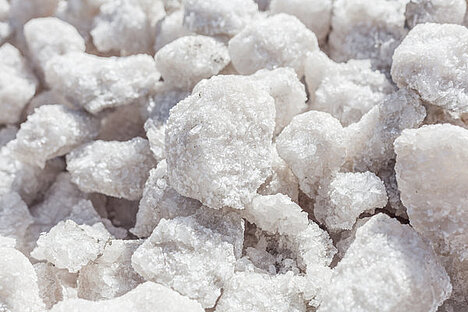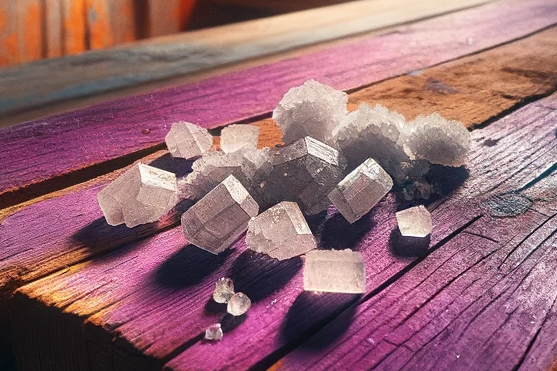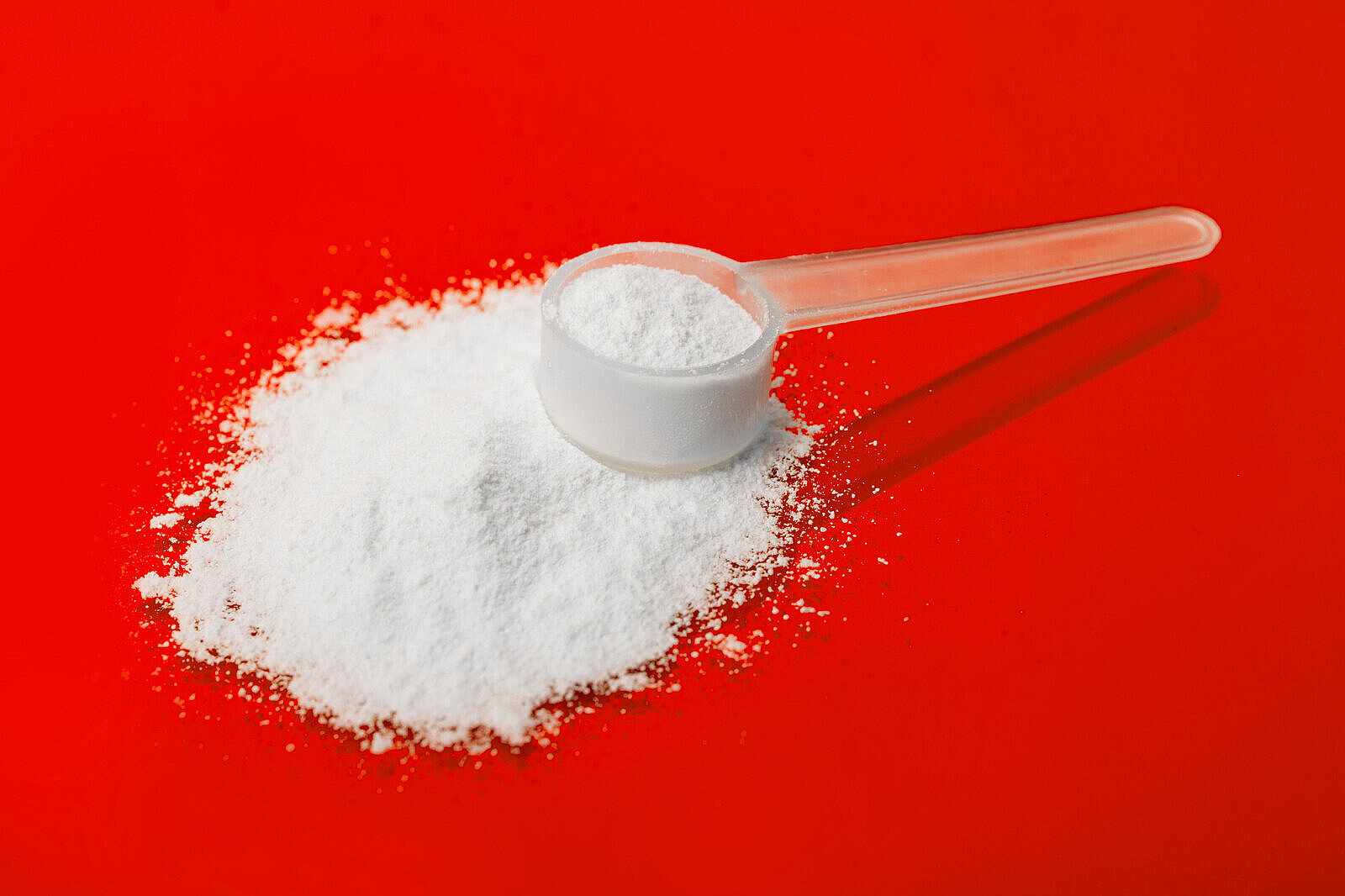Sodium chloride

The function of sodium chloride in the dog's body
Sodium chloride fulfills several important functions in the dog's body. Firstly, it is involved in the production of hydrochloric acid in the stomach, which is necessary for digestion. Secondly, it regulates the entire water balance and tissue tension and forms the basis for the excitability of nerves and muscles. It also plays a key role in maintaining the acid-base balance in the body.
The body of an adult dog contains about 0.2 to 0.4 percent sodium chloride and loses about 0.1 to 0.2 percent of it daily, which must be replaced. The amount required depends on various factors such as the dog's age, size, activity and state of health. A balanced diet should therefore contain enough sodium chloride to avoid a deficiency.
Benefits of sodium chloride in dog food
Sodium chloride has several benefits when it is included in dog food in appropriate amounts. Firstly, it improves the taste of the food and stimulates the dog's appetite. Secondly, it promotes fluid absorption and thus prevents dehydration. It can also act as a preservative and extend the shelf life of the food.
Sodium chloride can also be used as a volume substitute in the event of severe blood loss, e.g. in the event of accidents or operations. In this case, a sodium chloride solution (saline solution) is administered intravenously to stabilize blood pressure and support circulation.
Disadvantages of sodium chloride in dog food
However, sodium chloride can also have disadvantages if it is contained in dog food in excessive quantities or if the dog ingests too much of it. On the one hand, it can overload the kidneys, which have to excrete the excess sodium. On the other hand, it can lead to an increase in blood pressure and heart problems, as sodium binds water in the body and increases blood volume.
Excessive intake of sodium chloride can also lead to intoxication, which can manifest itself through symptoms such as vomiting, diarrhea, cramps, fever, blindness and even coma. Such poisoning can be triggered, for example, by the consumption of salty foods such as potato chips, salt sticks or salty crackers. In this case, immediate veterinary treatment is necessary to save the dog.
The optimum amount of sodium chloride in dog food
The optimal amount of sodium chloride in dog food depends on various factors such as the dog's age, size, activity and health. A general recommendation is that dog food should not contain more than 0.5 percent sodium chloride. This corresponds to about 1.25 grams per kilogram of food. This amount is considered safe for healthy dogs that have sufficient water available.
For dogs with health problems, especially dogs with heart and kidney disease, the amount of sodium chloride in the dog food should be reduced to avoid additional stress on the organs. In this case, a special diet food with a low sodium content should be used. The exact amount should be agreed with the vet.
Sodium chloride is an important mineral for dogs and should be included in dog food in sufficient quantities. It has various functions in the dog's body, such as regulating the water balance, the excitability of nerves and muscles and the production of hydrochloric acid in the stomach. It also improves the taste of the food and promotes fluid absorption.
However, too much sodium chloride in dog food can also be harmful, especially for dogs with heart or kidney problems. It can lead to kidney overload, high blood pressure, poisoning and even death. Therefore, the amount of sodium chloride in dog food should not be too high and should be adapted to the individual needs of the dog. A balanced diet is the best prerequisite for a healthy and happy dog's life.
Properties 3
Are you looking for other ingredients with a specific property?
Just click on them to find more.
If you notice any signs of hypersensitivity or poisoning in your dog, you should see your vet immediately. We are not a substitute for a vet, but we try to be as accurate as possible. Every dog reacts differently and we recommend you get a second opinion or consult your vet if in doubt.
Stay healthy and take good care of your four-legged friend!😊
Similar to Sodium chloride
Potassium chloride (KCl) is the potassium salt of hydrochloric acid. It forms colorless, salty-bitter tasting crystals that dissolve well in water. Potassium chloride is approved as a food additive...
Your dog needs a sufficient amount of magnesium every day to stay healthy and productive. The recommended daily dose is around 10 to 12 milligrams per kilogram of body weight. Magnesium can be...
Calcium chloride is a salt that consists of two parts chlorine and one part calcium. It is a white, crystalline powder that dissolves easily in water. Calcium chloride has various properties that...
The benefits of sodium bicarbonate for dogs Sodium bicarbonate has some positive effects for dogs due to its alkaline property. This means that it can neutralize acids. Here are some examples of how...



